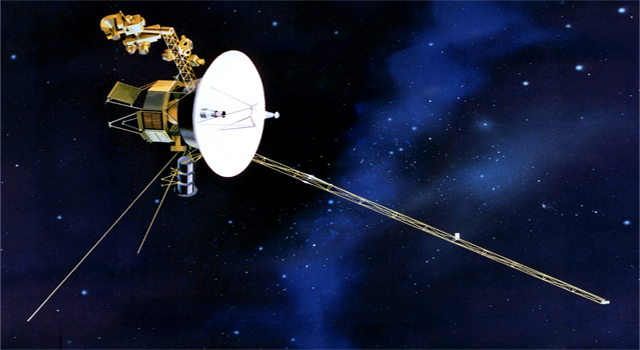News | November 17, 1998
Voyager 2, Back to Normal Flight Operations After Communications Black-out

The Voyager 2 spacecraft, now on the outer fringes of the solar system, was returned to normal flight operations Saturday, November 14, after a 66-hour communications black-out which began abruptly on Thursday, November 12.
Ground controllers at the Deep Space Network station near Madrid, Spain, lost Voyager 2's signal on Wednesday night at about 11:57 p.m. Pacific Standard Time (07:57 Universal Time Thursday). At the time, the spacecraft was in the process of shutting down power to its scan platform which contains science instruments, including the ultraviolet spectrometer. Preliminary analysis indicated that the commands were properly sent to the spacecraft.
Turning off the scan platform is part of a power conservation plan to keep Voyager 2 operating until at least the year 2020. There are still five experiments operating on Voyager 2: the cosmic ray instrument, low-energy charged particle instrument, plasma science instrument, plasma wave instrument and the magnetometer. As the spacecraft's onboard plutonium power source decays, it is necessary to periodically reduce the spacecraft electrical power usage in order to maintain an adequate power margin.
About 720 commands were sent Thursday to turn on the spacecraft's X-band transmitter; however, communication with the spacecraft was not immediately reestablished. Subsequent analysis of the probable failure modes suggested the spacecraft's onboard S-band exciter, a small oscillator used to generate the spacecraft's carrier frequencies, could have been shut off. About 360 commands were sent Friday evening to turn the spacecraft's S- band exciter back on.
The flight team reacquired the spacecraft's signal Saturday evening at approximately 6:18 p.m. Pacific Standard Time (02:18 Universal Time on Sunday). Telemetry had been switched to a data rate of 40 bits per second from the standard operating rate of 160 bits per second. Spacecraft systems were functioning normally, although some hardware components were slightly warmer than expected. The flight team reported that the backup X-band transmitter was on at the time of signal reacquisition.
Subsequent analysis of the spacecraft computer memory showed that the scan platform power-down sequence had executed exactly as planned. The team will continue to analyze data to determine the cause of signal loss.
Voyager 2 is departing the solar system at 48 degrees to the south of the ecliptic plane at a speed of 15.9 kilometers per second (35,000 miles per hour). Round-trip light time from Earth to Voyager 2 is currently about 16 hours. The spacecraft is now 8.4 billion kilometers (5.2 billion miles) from Earth, or more than 56 times farther from the Sun than Earth is.
Its twin, Voyager 1, the most distant human-made object in space, is healthy and operating normally. Voyager 1 is leaving Earth's neighborhood at 35 degrees to the north of the ecliptic plane at a speed of about 17.3 kilometers per second (38,752 miles per hour). Voyager 1 is currently 10.8 billion kilometers (6.7 billion miles) from Earth.
